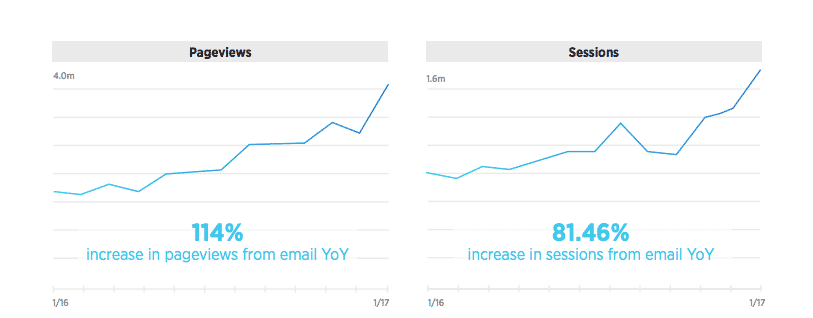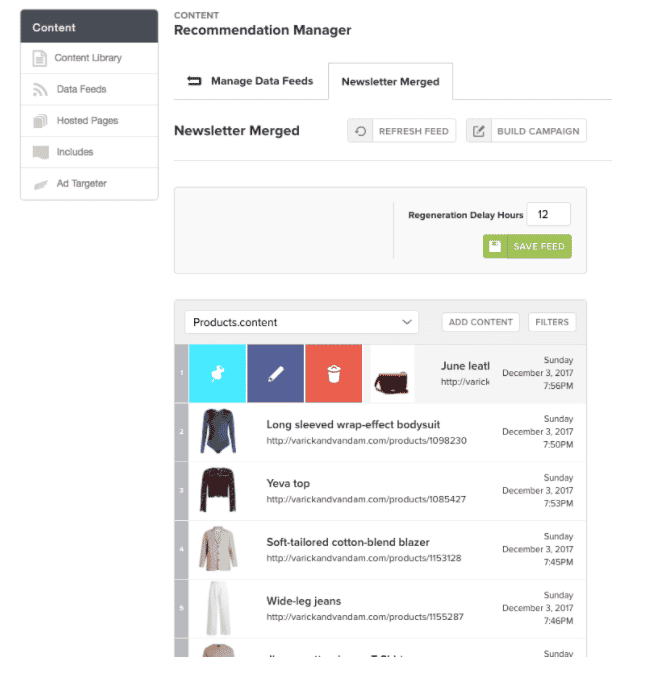Article
3 Steps to Maximizing the Potential of Your Email Marketing Program
April 30, 2018

All marketers have seen the stat that $44 is the average expected return for every dollar invested in email marketing. But getting to 44 times more ROI — or even greater levels — is not as easy as pressing send. Today’s consumer is overwhelmed by email volume, and with the channel being a primary source of revenue, marketers cannot afford to let their strategies stale.
Here’s the good news: Modern email marketing tools make it possible for marketers to increase the power of their program without needing to add hours of work to their day or unnecessary new hires to the team. Through machine learning and artificial intelligence, email marketers can scale tactical advancement to dramatically enhance results.
Investopedia and JustFab are two enterprise brands that marketers should be modeling after. Both teams are setting a new standard for email marketing through their use of personalization. Investopedia and JustFab have detailed roadmaps for the continued evolution of their email marketing and cross-channel campaign management programs. Both brands have strong internal alignment and market-leading technology partners bringing their vision to life.
Both brands increased pageviews from email, doubled sessions from email, increased email conversion and decreased churn substantially. How did they do it? Here are three steps marketers can take to reinvigorate their email programs, building better relationships with customers and stronger ROI.
Investopedia’s email success
1. Prioritize the integration of data science
Data science has been dubbed the sexiest field of the 21st century. Both Investopedia and JustFab combine building and buying their data. Their marketing teams have access to in-house data scientists. However, they also use external technologies to apply data science to their marketing efforts through machine learning-driven personalization.
Investopedia made it a mission to align their goals internally before they began to innovate within email. Their marketing, editorial and data science teams worked together to develop a new process to tag and label their articles. This enabled them to better personalize content recommendations for readers at an individual level, and gave evergreen content new life, leading record setting engagement during what was traditionally their slowest time for onsite traffic from email.
2. Set a strategy for the ongoing evolution of personalization
Recommendations and personalization have become synonymous. Still, marketers can achieve much more with their personalization strategy by considering the specific context of the individual end-user. Going zero to hero is not the reality in which marketers exist, but it is critical to have a plan for the continued integration of personalization tactics into their marketing and total experience.
Start with recommendations. For a brand new email subscriber, marketers might recommend their top performing content or products, so that they’re peacocking the best of the best to drive repeat visits and solidify their relationship. Simply sending a daily newsletter? Use customer interest data to make sure all recommendations are relevant to the individual. Investopedia completely customizes email newsletters based on each subscriber’s interests using a combination of algorithms and editorial curation. This means readers interested in retirement receive articles about retirement planning and 401(k) alternatives instead of real estate investments or market news. At the same time, editors still have the power to curate manually and distribute important stories across their audience.

JustFab recommends products using multiple approaches. They brand is now testing connecting email and website personalization to create a seamless experience for individual members. This approach transforms the notion of cross-channel campaign management into true cross-channel experience management, where email and web is unique for every individual. Go beyond recommendations by personalizing send time and cadence, as well as discounts, promotional offers, and even delivery channel — all based on an individual’s historic and predicted behaviors.
3. Measure cohorts, not campaigns
Measuring personalization is often seen as a black box . Marketers know that it works, but given true personalization is about individual engagement, it’s impossible to achieve effective measurement through the same methods used to evaluate segment-driven campaigns.
By thinking about customer and audience cohorts rather than campaigns, marketers can demonstrate the long-term impact of personalization while also measuring increases in short-term conversion. Consider cutting the data by sign up date, acquisition source, and other primary audience engagement markers. With holdout groups, marketers have the ability to test the impact of, say, a personalized welcome series versus a non-personalized approach in terms of how audiences experiencing either approach engage over the long-haul.
Marketers recognize the importance of email. Innovations in this time-tested channel have changed the way marketers are engaging with today’s customers. Through data science, personalization, and cohort analysis, they can use email to foster stronger relationships with consumers and meet their financial goals.
The State of Brand Loyalty in the U.S. in 2023
Related



